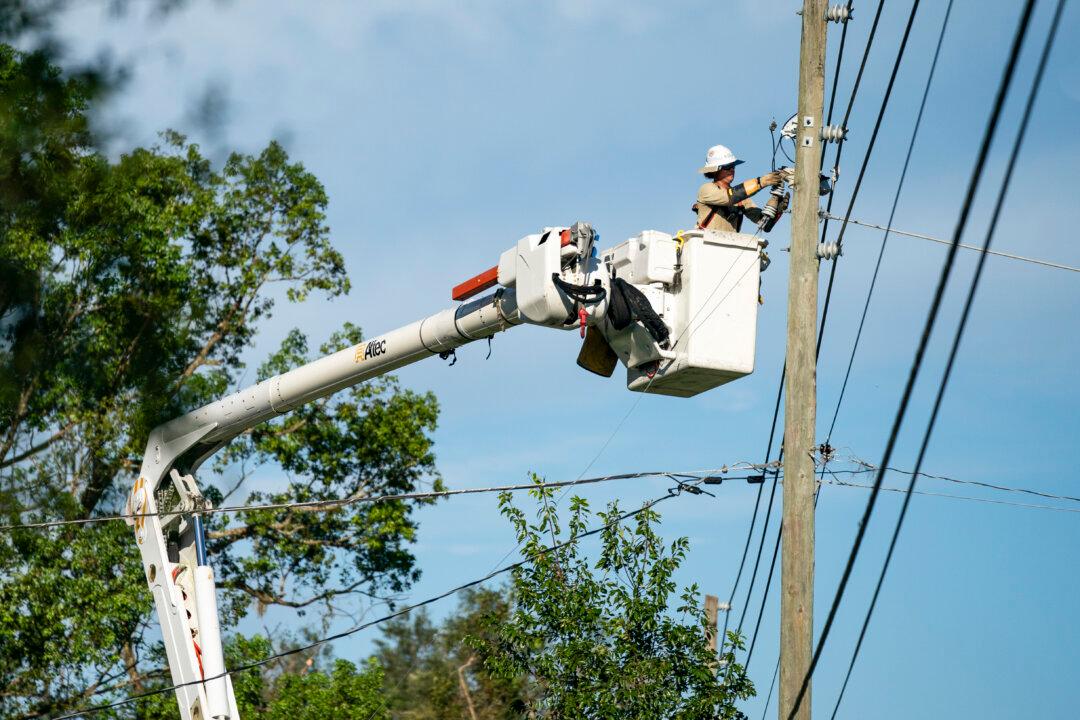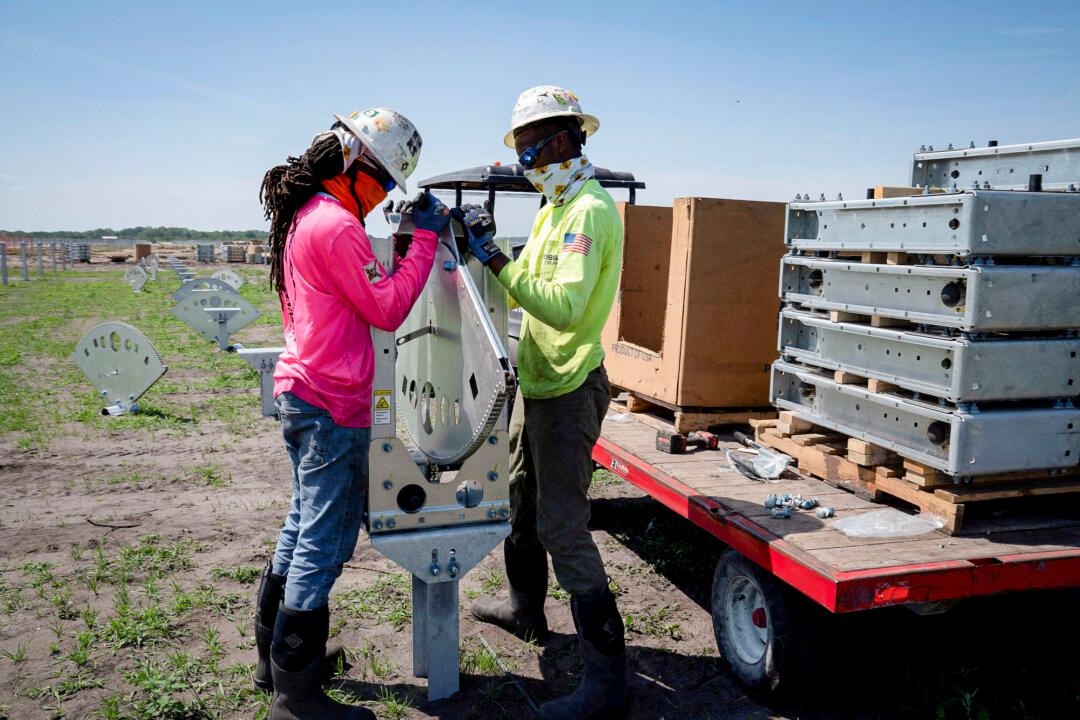Billy Lang is a commercial truck driver, medic, tree-trimmer, pole-climber, high-wire engineer, and whatever else it takes to keep the lights on.
Lang, 33, of New Milford, Connecticut, is a Class B Journeyman Lineman, one of about 120,000 who tend 450,000 miles of powerlines, 180 million utility poles, and 2.7 million transmission towers across the United States, according to the Department of Energy.
“It’s a great job if you don’t mind working outside and are comfortable with heights,” he said.
Five years ago, Lang was an emergency room technician, but he said he didn’t like it. A co-worker mentioned that her son had gone to a school and was a lineman.
“I looked into it. It was just what I wanted,” Lang said.
He enrolled in the Lineman Institute of the North East, a 500-hour pre-apprentice trade school in Kingston, New York.
Six months later, he went to work for Eversource, New England’s largest electrical utility, with 4.4 million customers in Connecticut, Massachusetts, and New Hampshire.
He completed his four-year apprenticeship about six months ago, he told The Epoch Times, “topping out and becoming a journeyman,” a Class B lineman.
“They said it takes 10 years to make a good lineman,” Lang said, but an aging workforce’s attrition means newcomers must accelerate that timeline.
“Right now,” he said, “there are way more apprentices than experienced linemen. There’s, like, a 20-year age gap.”
Bill Bosch, Northwest Lineman College vice president of apprenticeships and client solutions, said, “The baby boomers are retiring. On any given day, there are 7,000 to 10,000 unfilled jobs in the electrical trade, from linemen to substation technicians to metering.”
Electricity demand was relatively static for decades until recent surges exposed shortfalls in electricians and linemen needed to build out a grid set to rapidly expand.
“The trades have not been pushed or have not been in a positive light for 10, 20 years but now, with the compensation, the benefits, the lifestyle, the trades are looked at as a real opportunity to provide a good life for yourself and your family,” Bosch told The Epoch Times.
Northwest Lineman College based in Edgewater, Florida, connects prospective linemen with 15-week courses nationwide that anyone with a high school degree who is fit and willing to learn can enroll in.
“Line school” is the first step to getting hired as an apprentice, according to Bosch.
“It’s just like attaining a college degree: four years of bookwork and on-the-job training,“ he said. ”Many times, families have to take a back seat. It takes a lot of time.”
It’s demanding, but rewarding, Bosch said.
“I would say a lineman, by definition, is a selfless thinking-of-others profession. They put the public, residential customers’ needs before their own,” he said. “They care so much about the industry, the people they work with, the people they provide energy to.”

Large Trade, Small World
Complacency is lethal when dealing with electricity, according to Bosch.“You have to have a humble confidence. You need to stay humble, but have confidence in yourself to perform, to have safety always first,” he said.
“[Linemen] are often the first to arrive in hazardous situations—they go in even before police and fire are allowed to—but are not classified as first responders.”
“We would love the public to contact their [congressmen] and get this bill passed,” he said.
Being a lineman is more than just a job. There’s “a comradery, a brotherhood, a culture” among powerline workers, Bosch said, noting that women should apply.
“Some of the best linemen in the United States are women,” he said.
“It’s a large trade but a small world,” he said.
As many as 60,000 linemen per year travel on short notice to natural disasters to rebuild downed power lines and help devastated communities get back onto their feet.
“You make relationships all over the nation. Somebody from the West Coast, California, may get to know somebody in Maine, helping in an ice storm,” Bosch said.
Lang, for now, is rarely on storm rosters, although he’s been called to rebuild downed lines in New Hampshire and Massachusetts.
He works from 6 a.m. to 4 p.m. Monday through Thursday across western Connecticut “in older neighborhoods with outdated lower-voltage transmission lines,” replacing them with “bigger poles, thicker wires that are more resistant to tree damage.”
Projects begin with “setting [new] poles,” followed by “running wire, and then energizing that wire, and shifting load type into the new wire, and then ‘wrecking out,’ getting rid of the old equipment.”
It can be a significant undertaking requiring a police escort and flaggers to control traffic while linemen work above, Lang said.
Like many, he has a commercial driver’s license and could probably certify as a licensed tree-trimming arborist with chainsaws and hedge clippers as standard gear.
Clearing trees from rights-of-way “no one has touched for 30 years, where trees grow into the wires” is an occupational hazard, Lang said, noting that branches ensnared in wires stretched “like a banjo string” can be especially dangerous because “the tree can go flying” once disentangled.
“Bee spray is a must for hornets nests that can be under transformers,” and bug spray and sunscreen are must-haves in the summers, he said.
The schooling, the elements, the expected, and the unexpected are all part of the job that he loves.
“I absolutely believe it was worth it,” Lang said. “It changed my life.”







